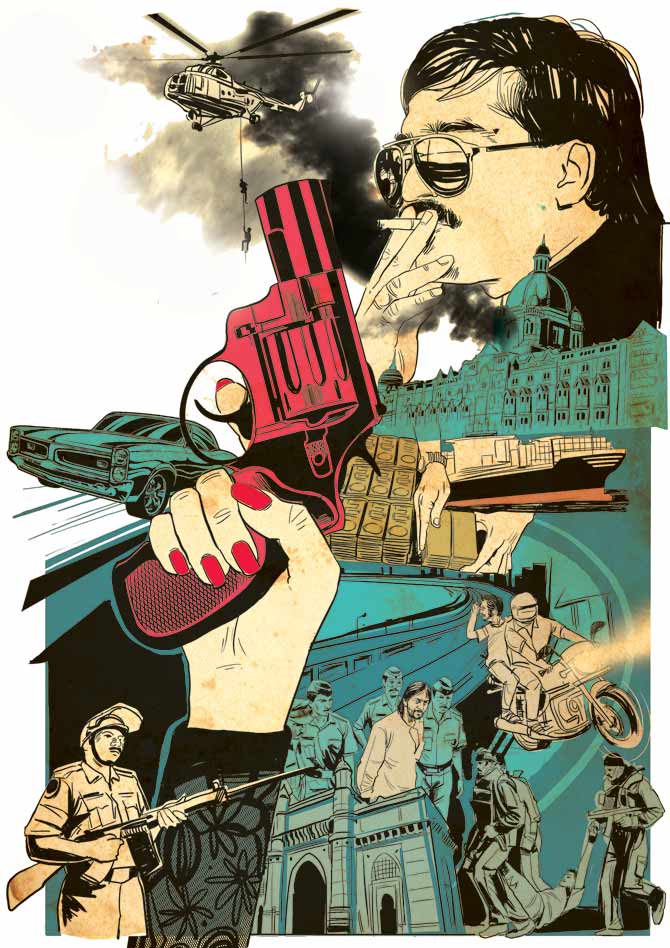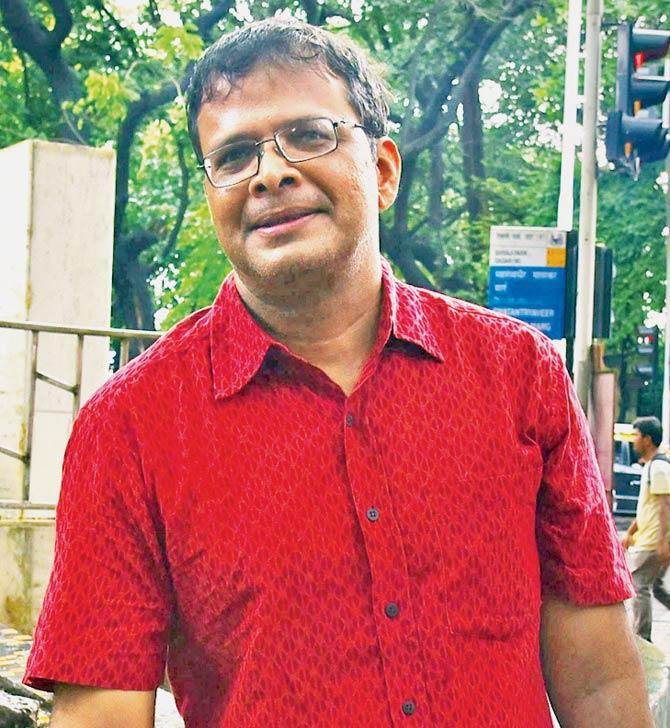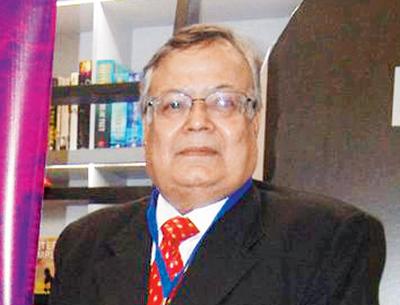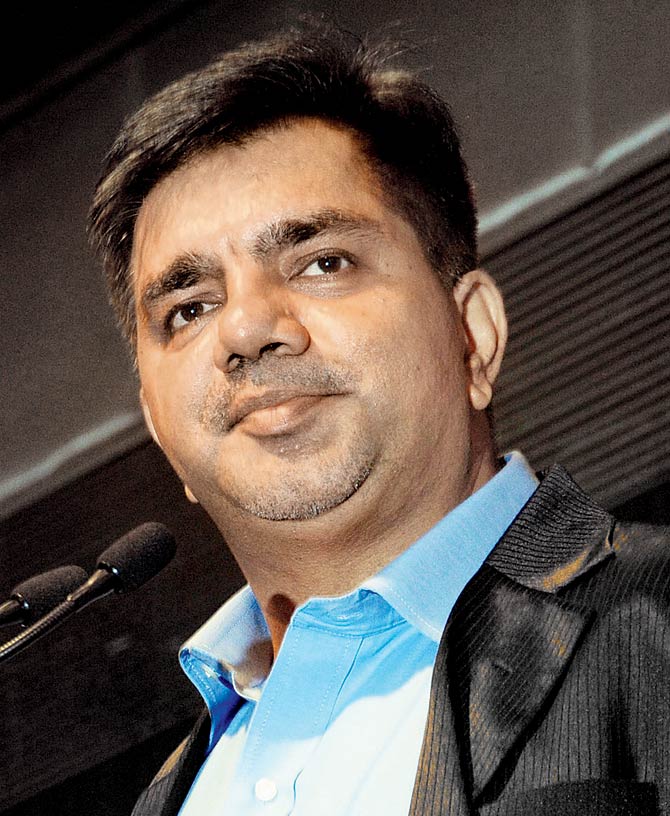Why Mumbai offers a perfect canvas for gritty non-fiction and hardboiled thrillers

Jerry Pinto, urender Mohan Pathak, Mahendra Jakhar, S Hussain Zaidi

Illustration/Uday Mohite
Between poring over Jerry Pinto's latest fiction, Murder in Mahim, a line from a forgettable '80's film comes to mind - yeh Mumbai shaher haadson ka shaher hai. The lyrics build a convincing portrait of the metro - always alive, forever hungry, mostly exacting and sometimes, seething like a hardened criminal.
ADVERTISEMENT
It's not surprising why sinning is at the heart of this city's narrative. Like investigative journalist and author S Hussain Zaidi puts it, Mumbai is crime, crime is Mumbai. If there is a difference, it's of one legitimising the existence of the other.
That Zaidi and recently, Pinto found Mumbai a fertile turf to re-imagine and narrate dark, riveting plots validates the fascination.
Ambai's A Meeting on the Andheri Overbridge (Juggernaut), Mahendra Jakhar's The Swastika Killer (Westland), and Surender Mohan Pathak's Framed (HarperCollins India), all present a similar canvas of the city. "Look at any city in the country, and I am not just referring to the crime prism; from the number of books that have been inspired by a city, Mumbai tops the list. It lends itself to great storytelling," Priya Kapoor, editorial director of Roli Books, says. Does Mumbai and noir fiction emerging out of India, then, go hand in hand? We'd like to believe not, because "murder and crime" as Ambai puts it, are not just an urban phenomenon. But, those telling us the stories, may disagree, even if reluctantly.

Jerry Pinto
Crime hub of the country
Back in 2012, when Zaidi released Dongri to Dubai, a book he had worked on for nearly a decade, the writer once again put the spotlight on the city's Mafiosi, which by then was only basking in its old, lost glory. Nonetheless, the drama stayed with us, and the plot, propelled his book to bag the bestseller crown. The city Zaidi lives in continues to inspire his works. His soon-to-release Dangerous Minds (Penguin India), co-written with Brijesh Singh, delves into the lives of the city's most talked-about terrorists. "Mumbai is like this mysterious, beautiful, dazzling woman who you can never understand in entirety. There are so many layers," Zaidi says, when explaining why he can't separate his works from the city.
What we forget, he explains, is that "the city is also the crime capital of the country". "The biggest scams have broken here, the most ferocious underworld gangsters lived and thrived here, and many terror modules were formed in this city. Criminals are drawn to it like moths to a flame."
And, that's possibly why Pathak too feels that a "thriller is best set in a metropolis like Mumbai". It's tough to imagine events of narcotics smuggling, extortion and assorted bhaigiri in small towns, argues the writer who has written over 300 Hindi crime novels in a 40-year-long career.

Surender Mohan Pathak
Fascination beyond borders
The obsession for Mumbai crosses borders too. Late English writer HRF Keating lived in England, got published in America and chose Mumbai as venue for his mystery stories. "Mumbai police inspector Ganesh Ghote was a pivotal character in his work. And, he wrote nine full-length novels in a series. Now, if a man sitting 9,000 miles away from Mumbai could write about the city without visiting it, why won't I living 800 miles away, set my novels here?" asks Delhi-based Pathak.
That Bollywood has added happy fuel to the fire cannot be ignored. "Mumbai's crime is more cinematic," says city-based author and Bollywood screenwriter Jakhar, who originally hails from Delhi. "Honestly, I find the crime scene back home petty in comparison to Mumbai. It's made of small goons and gangsters, who have never managed to hold my interest," he adds.
Juggernaut editor R Sivapriya offers a rational explanation. "Mumbai is like a character in a novel with a personality of its own. We all know what Mumbai stands for. It's not always as clear with other cities, like say, Jabalpur."
Pinto agrees. "Someone might want to experiment with a farm house murder outside Delhi, but it would take someone who knows that world [to do it]. I don't. I've only ever driven past them," he says.

Mahendra Jakhar
Mumbaikars know their city
Delhi-based Anuj Bahri, who heads the Red Ink Literary Agency, adds another dimension to Indian noir fiction. According to him, some of the best works in crime writing have only emerged out of Mumbai. "Mumbaikars think differently. I think it has something to do with the environment or the nature of the place they live in."
While most of the crime manuscripts Bahri reads are not location-specific, he says that when Mumbaikars write about their city, their association with its nooks and crannies are inevitable. "It has all the elements that a crime writer needs to tell a great story. It's got the sea - so you can imagine a yacht coming in, and somebody smuggling goods. It also has mysterious mansions and chawls."
Take, for instance, the plot of Pinto's Murder in Mahim. The novel opens inside a grimy men's toilet at Matunga railway station, used as cover for making a quick buck.

S Hussain Zaidi
A gruesome cold-blooded murder here slowly unravels a murky tale of prostitution, homosexuality, extortion and police corruption. For a reader, the railway station becomes the immediate point of connect. As Pinto's story navigates through the familiar alleys of Colaba, Bandra and Mahim, recreating the melancholic sounds and smell of crime, poverty and death, you can't help but relate to this monster of a character - the city, which the writer conceals within his narrative. "We have an attraction to the bright lights of the city, but we also know that the light does not spread evenly. There are shadows and grey areas and in those patches of darkness, there are interesting figures," Pinto says, while explaining why writers often link Mumbai with crime.
Zaidi, who receives a large number of manuscripts related to crime fiction each month for his imprint line with Penguin, Blue Salt, likes to describe the city as a canvas, where you can paint something new each day. "If you get the formula right, the roads here are paved with gold."
 Subscribe today by clicking the link and stay updated with the latest news!" Click here!
Subscribe today by clicking the link and stay updated with the latest news!" Click here!







